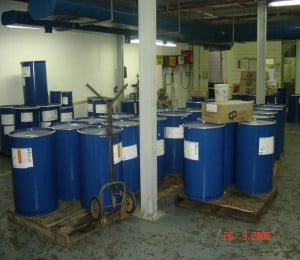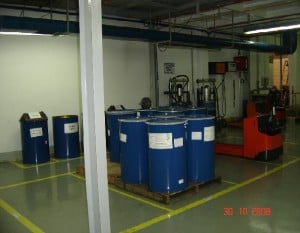We are pleased to present this guest blog by Mary Fogelsinger-Huss. Mary is currently an ASQ Certified Six Sigma Black Belt working for the Dow Corning Corporation in Midland Michigan. She has nearly 30 years experience in the chemical industry, with nearly half that time involved in quality practices for various product lines in the company. She holds a bachelors in Chemical Engineering from Michigan Technological University.
Lean Six Sigma has been widely accepted in the industrial setting as a method to improve many types of processes. The Lean Toolset is easily applied to nearly any setting that you can think of. The basic fundamental ideas of “making value flow” and “eliminating waste” can be as appropriate for a manufacturing company as it can for your own home. The first idea that many people like to apply is the “5S” concept: Sort, Straighten, Shine, Standardize, and Sustain. The first three are usually pretty easy to accomplish and are pretty straightforward in many settings…it’s that Standardize and Sustain thing that many of us struggle with. Here is an example, using a receiving dock at a manufacturing site:
 Notice the stuff piled on top of the drums, and the inability to access many of the drums. In working with this team, they realized that many of the items had been in the area for far too long, and they weren’t sure why they were there.
Notice the stuff piled on top of the drums, and the inability to access many of the drums. In working with this team, they realized that many of the items had been in the area for far too long, and they weren’t sure why they were there.
SORT will eliminate the items that are not needed or are in the wrong spot. Remove those items to a different location by keeping in mind the idea of “Runners, Repeaters and Strangers.” Runners are items used daily, and should be kept close at hand. Repeaters are items used weekly and should be kept in an easily accessible storage area. Strangers are those items that are rarely used and should be in a designated location. Anything that doesn’t get classified as one of those goes to the “Red Tag” area, and is either moved to the appropriate location or disposed of.
STRAIGHTEN is the organizing of the area in accordance with the Runners, Repeaters, Strangers strategy and determining the optimum positioning of items. This is much easier with all the excess (waste!) removed from the area.
SHINE is the process of cleaning the area and upgrading the surroundings to a level that encourages pride in your work area, and making sure all your work items are in a usable condition, when needed. Whether that means replacing cabinets or a simple coat of paint…it all adds to increased pride in your work space.
STANDARDIZE the area to ensure items are returned to the appropriate spot and that any “nonconforming” item is recognized right away. This is usually accomplished by labeling areas, creating shadow boards, or marking an area with text for what goes there.
SUSTAIN is one of the “5S’s” that we all struggle with. Everything goes great for a while, then we get busy or rushed and just “put this here for a minute”…then never get back to take care of it. One way to manage this is through the simple reminder of a photo. Many of our areas have a photo of what the area should look like, and at the end of the day (or shift) we make sure it’s returned to that image. The photos are posted in a prominent place like a bulletin board or on a wall near the process area. Also, in a more formalized 5S program, a monthly audit can be used to ensure the gains made with the 5S activity are maintained.
to ensure the gains made with the 5S activity are maintained.
Here’s how the area looks after the 5S. Notice the paint lines on the floor and labels on containers. All unneeded equipment and materials have been removed and, as you can see, the floor just shines!
Which area would you rather work in?
Great post. I appreciate the emphasis on Standardize and Sustain….not easy to achieve! The before and after pictures really tell the story.